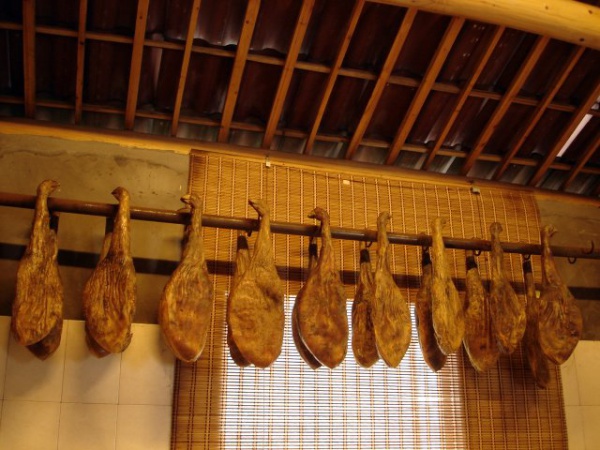Facts About Jinhua ham
Jinhua ham is a type of dry-cured ham originating from the city of Jinhua in China's Zhejiang province. It is a treasured ingredient in Chinese cuisine, frequently used to enhance the flavor of stews, braised dishes, soups, and stocks. The production process of Jinhua ham is intricate and involves several meticulous steps: preparing the meat, salting, soaking, drying, ripening, and post-ripening. Traditionally, it is made from the hind legs of a special breed of pigs renowned for their high-quality meat and thin skin.
The technique for making Jinhua ham dates back to the Tang Dynasty. Legend even attributes Marco Polo with bringing the method to Europe. In Chinese culinary traditions, Jinhua ham is highly prized for its rich umami flavor and features prominently in dishes like "Buddha Jumps Over the Wall." The finest Jinhua ham possesses distinct physical characteristics and a unique taste that balances salty, umami, and sweet notes.
What imparts Jinhua ham its distinctive flavor is the high concentration of free amino acids and nucleotides, especially glutamic acid and 5'-inosinic acid. The ham's aroma is a product of fermentation and the specific environmental conditions during the aging process. Interestingly, Jinhua ham shares some aromatic compounds with dry-cured Iberian hams.
In 2003, Jinhua ham was embroiled in a pesticide scandal in China, where some producers used pesticides to prevent spoilage and insect infestation. This incident tarnished its reputation and diminished market demand, affecting reputable producers as well.
Despite this setback, Jinhua ham remains an important and culturally significant food in Chinese cuisine. It is renowned for its unique flavor, meticulous production process, and rich history spanning centuries.

 Vietnam
Vietnam